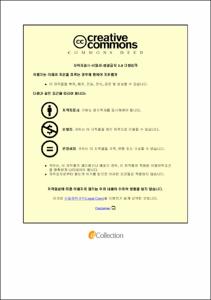컨테이너 운전기사의 수면실태와 졸음운전 간 관계에 관한 연구
- Alternative Title
- The Relationship between Sleep Status and Drowsy Driving of Container Drivers
- Abstract
- Traffic accidents related to freight vehicles are increasing day by day, which is one of the dilemmas of many countries, including Korea. The reason is that Korea is a country whose economy focuses mainly on import and export, so the demand for freight is very high. In the process of multi-modal freight transportation, the means of transport of import and export goods on domestic roads are mainly container trucks. While the specificity of the job specializes in long-distance driving and driving at night, so one of the biggest causes of accidents in this type of traffic is drowsy driving. Therefore, in order to reduce accidents caused by container trucks, the first thing to do is to focus on research on the sleep status of drivers and its relationship with drowsy driving, then recommending some possible and suitable solutions.
Human sleep has a very complex structure. The assessment of a person's sleep is not simply based on the amount of sleep as we often do. Therefore, in most human sleep studies, sleep is assessed based on both sleep duration and sleep quality. In this study, the sleep duration was calculated as the average sleep time of the drivers in 1 working day and their sleep quality was assessed based on the PSQI - Pittsburgh Sleep Quality Index. This research use quantitative analysis method which based on responses of 173 container truck drivers parking at Busan port shows that the drivers’ average distance is 507km, sleep time per day is about 5 hours 47 minutes and the PSQI index is 7,838 (5 or over is bad sleep quality). In addition, to understand clearly the sleep characteristics of container truck drivers and their difficulties in ensuring their own sleep, in-depth interviews were also conducted. Among 17 drivers, 11 drivers are long-distance drivers and 6 of them are short-distance drivers. The results of interviews showed that short-distance drivers who usually only drive during daytime were most satisfied with their current sleep status. In contrast, long-distance drivers often have to drive at night to reach their destination on time, and the inconvenience of sleeping in the cars negatively effects their sleeping quality. Compared to short-distance drivers, long-distance drivers are more likely to suffer from problems because they frequently drive at night sleep in the cars. Sleeping at daytime is a good option, but according to drivers, lack of parking spaces and slowness in loading and unloading times at the port are the reasons why they can't take a nap. Moreover, they also admitted that they have to often drive in a state of fatigue and sleepiness. It is hoped that the results of this and other similar studies can serve as a reference for the Korean government to establish useful policies to reduce traffic accidents caused by trucks. Hereby not only improving the efficiency of the logistics industry, but also ensuring social security.
- Issued Date
- 2022
- Awarded Date
- 2022. 2
- Type
- Dissertation
- Publisher
- 부경대학교
- Alternative Author(s)
- 응웬 티 김 안
- Affiliation
- 부경대학교 대학원
- Department
- 대학원 국제통상물류학과
- Advisor
- 조찬혁
- Table Of Contents
- I . 서론 1
1.1 연구의 배경 및 목적 1
1.1.1 경제 및 물류현황 1
1.1.2 한국의 교통사고현황 2
1.2 연구의 범위 및 구성 3
II. 이론적 배경 및 기존 문헌 검토 5
2.1 개인적 특성 6
2.2 근무관련 특성 7
2.3 수면의 특성 8
2.4 졸음운전 9
2.5 졸음운전 대응 방법 10
III. 연구방법 11
3.1 설문지 배포 및 수집 방법 11
3.2 연구의 틀 11
3.3 자료 분석 방법 12
IV. 실증분석 결과 14
4.1 연구 대상자의 일반적 특성 14
4.2 작업에 대한 특성 15
4.3 수면에 대한 특성 17
4.3.1 수면 습관 17
4.3.2 수면 방해 18
4.3.3 수면의 질 19
4.3.4 PSQI 총점을 구성되는 7가지요소의 특성 20
4.3.5 졸음운전 대응방안 21
4.4. 근로강도에 대한 집단 간 운전기사의 수면 상태를 비교 23
4.4.1 휴식 정함 여부에 따른 수면의 상태 23
4.4.2 주말 및 공휴일 근무 여부에 따른 수면의 상태 24
4.4.3 졸음 운행 여부에 따른 수면의 상태 25
4.4.4 머리 숙임 여부에 따른 수면의 상태 26
4.4.5 수면 취함 여부에 따른 수면의 상태 27
4.4.6 근무시간 고정 여부에 따른 수면의 상태 28
4.4.7 운전 거리에 따른 수면의 상태 29
4.5 수면 실태와 졸음운전의 관계 30
4.5.1 수면시간이 다른 집단 간 졸음운전 일수 비교 34
4.5.2 수면의 질이 다른 집단 간 졸음운전 일수 비교 37
V. 결론 40
5.1 실증분석 결과에 대해 요약 및 논의 40
5.2 시사점 42
5.2.1 학술적 시사점 43
5.2.2. 실무적 시사점 44
5.3 연구의 한계점 및 향후 연구방향 45
참고문헌 46
부록 49
- Degree
- Master
- Appears in Collections:
- 대학원 > 국제통상물류학과-FTA비즈니스전공
- Files in This Item:
-
-
Download
 컨테이너 운전기사의 수면실태와 졸음운전 간 관계에 관한 연구.pdf
기타 데이터 / 643.24 kB / Adobe PDF
컨테이너 운전기사의 수면실태와 졸음운전 간 관계에 관한 연구.pdf
기타 데이터 / 643.24 kB / Adobe PDF
-
Items in Repository are protected by copyright, with all rights reserved, unless otherwise indicated.